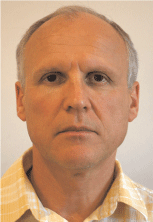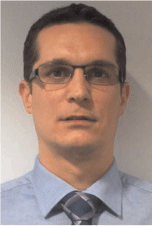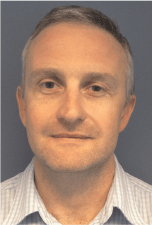Estimation of uncertainties in fault lateral positioning on 3D PSDM seismic image: an example from the North West Shelf
Sergey Birdus A , Vincent Ganivet A , Alexey Artemov A , Ray Teakle B and Paul Phythian BA CGG.
B Chevron Australia.
The APPEA Journal 56(2) 556-556 https://doi.org/10.1071/AJ15062
Published: 2016
Abstract
This extended abstract presents a two-step sequence to estimate uncertainties in lateral positioning of fault planes on 3D PSDM (pre-stack depth migration) seismic images. This analysis can be applied to any localised detail on a seismic image but, in the majority of geological settings, it is most important for the faults.
The first step provides an approximate evaluation of what causes the uncertainties, how the uncertainties are distributed in a 3D space, and what to expect within target zones. The authors assume that every complex detail within a 3D PSDM velocity model causes some uncertainties to the seismic image below. Thus, the uncertainties at a target level depend on the complexity of the overburden and the seismic acquisition parameters. At this step a qualitative 3D volume of lateral fault position uncertainties is created.
In the second step the authors focus on a single fault of practical interest. Based on the results of the first step, the authors modify the existing 3D PSDM anisotropic velocity model by introducing additional anomalies that cause maximal changes to the lateral position of the fault on seismic image. Then the authors iteratively re-migrate a small sub-volume around the fault and check the PSDM images and residual moveout. The objective is to find out how far the velocity variations can move the image of the fault and still satisfy available seismic data.
The second step gives more reliable quantitative estimations of the impact of velocity on fault positioning. A real multi-azimuth 3D seismic dataset from the North West Shelf is used to illustrate this sequence.

Sergey Birdus works as a Depth Processing Supervisor with CGG in Perth. He received his PhD in geophysics from Kiev University in 1986 and worked as a lecturer there, a researcher in research and development departments of major Russian service geophysical companies, and in several positions with Paradigm Geophysical in Moscow and Perth before joining Veritas in 2006. Sergey works on depth processing projects from Australia and the Asia-Pacific region. |

Vincent Ganivet works as a Geophysical Supervisor with CGG in Perth in the Seismic Imaging department. He received a postgraduate diploma in marine geosciences from the IUEM (Institut Européen de la mer - France) in 2000 and a master’s in geophysics from the EGID Institute in France in 2001. Vincent joined Veritas in 2002 in the UK as a processing geophysicist, and has held different positions within Veritas, CGGVeritas, and now CGG in the UK, France, and Australia since 2010. He has been exposed to land and marine data from around the world and principally from the Asia-Pacific region since 2010. Vincent has been a geophysical supervisor in Perth since 2013. |

Alexey Artemov is a team leader in the Seismic Imaging group with CGG in Perth. He received his diploma in geophysics in 1994 from National University in Kazakhstan, and since then has worked in different positions in several geophysical services companies in Kazakhstan, Southeast Asia, the Americas, and Australia. Alexey joined CGG in 2008, and is involved in various challenging depth imaging projects. |

Ray Teakle has more than 31 years of industry experience, the majority with Chevron. Ray graduated from the University of Adelaide in 1984 and spent three years at SSL and five years at Santos before joining WAPET in 1992. He worked in the seismic data processing and exploration/new ventures departments, including involvement with the drilling of the Gorgon appraisal wells and Jansz-Io discovery. Ray then spent eight years in Lafayette, Louisiana, working in Gulf of Mexico (GOM) shelf exploration and was a member of the Chevron GOM Delineation Review Team. Since returning to Australia in 2011, Ray has worked as Senior Development Geophysicist in Chevron’s Wheatstone Subsurface Team. |

Paul Phythian is a Processing Geophysicist in the Geophysics Team of Chevron Australia’s Earth Science Services group in Perth. Prior to working with Chevron, Paul spent 13 years as a processing geophysicist with various seismic processing contractors in Australia. He has been with Chevron for eight years, initially in the Exploration Venture Gas team of Chevron’s Australian Business Unit, followed by a role in Chevron’s Perth Global Technology Centre, and is now back working in the Australian Business Units Asset Development department. A native of Brisbane, Paul completed his Bachelor of Applied Science degree with Honours in geophysics from the University of Queensland in 1994. |


